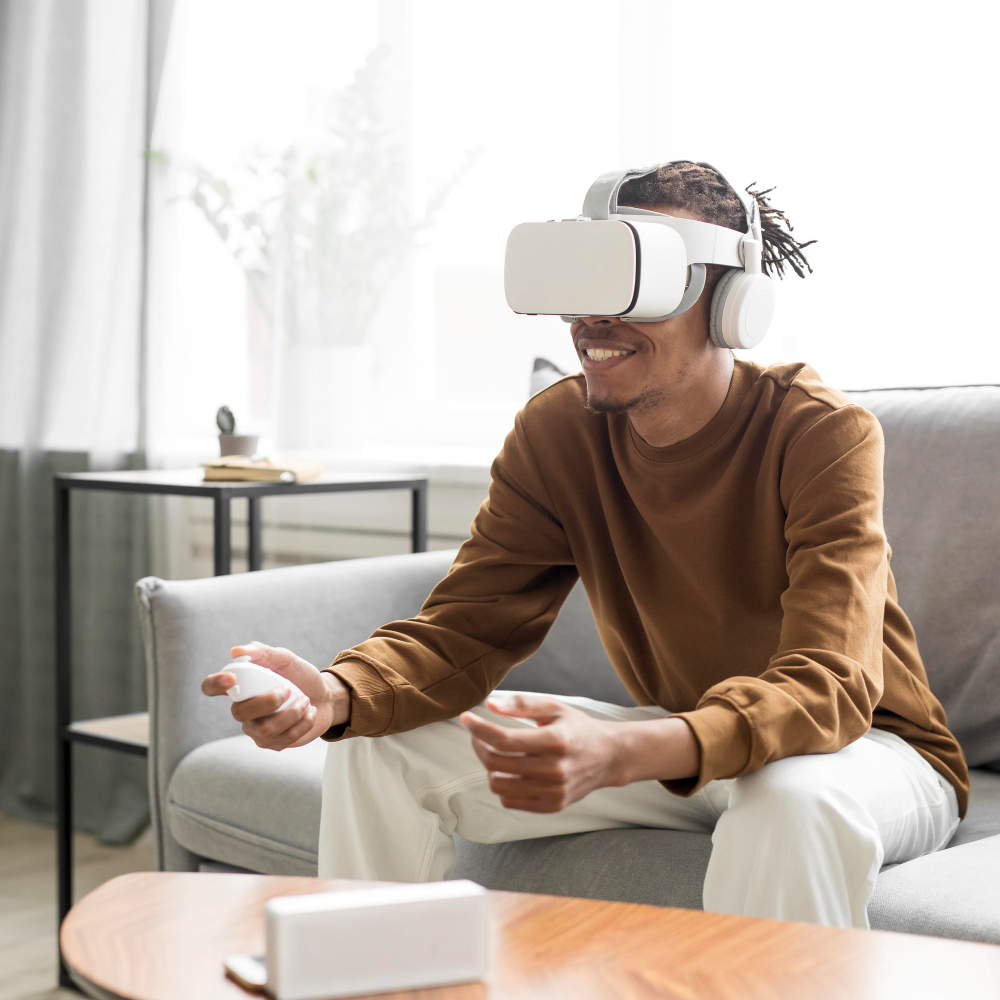Introduction
Augmented Reality (AR) and Virtual Reality (VR) technologies are transforming how we interact with digital content and the physical world. By blending or fully immersing users in computer-generated environments, AR and VR are revolutionizing industries like gaming, education, healthcare, retail, and more. This article dives into the definitions, differences, applications, benefits, challenges, and future trends of AR and VR.
What Are AR and VR?
- Augmented Reality (AR) overlays digital information or objects onto the real world, enhancing perception without replacing the physical environment. Examples include Pokémon Go and AR navigation in smartphones.
- Virtual Reality (VR) creates a fully immersive digital environment that replaces the user’s real-world surroundings, typically through headsets like Oculus Rift or HTC Vive.
How AR and VR Work
Augmented Reality
AR uses cameras, sensors, and software to detect the real-world environment and superimpose digital content in real time. Devices include smartphones, tablets, AR glasses (e.g., Microsoft HoloLens), and heads-up displays.
Virtual Reality
VR employs specialized headsets that track head movements and display stereoscopic 3D images, creating the illusion of presence in a virtual space. Controllers and haptic devices enable interaction within these environments.
Applications of AR and VR
1. Gaming and Entertainment
- Immersive games and experiences that engage users deeply.
- VR theme parks and live events.
- AR-enhanced games and live sports broadcasting with real-time stats.
2. Education and Training
- Virtual labs, simulations, and historical recreations for immersive learning.
- Professional training for surgeons, pilots, military personnel using VR simulations.
- AR overlays to assist hands-on tasks and improve comprehension.
3. Healthcare
- VR therapies for pain management, PTSD, and phobias.
- AR-guided surgery providing surgeons with real-time patient data.
- Rehabilitation exercises enhanced by immersive feedback.
4. Retail and E-commerce
- AR apps that let customers try on clothes or visualize furniture at home.
- Virtual stores and showrooms in VR environments.
5. Architecture and Real Estate
- VR walkthroughs of properties before construction.
- AR tools to visualize interior design changes on-site.
Benefits of AR and VR
- Enhanced Engagement: Immersive experiences increase user interaction and retention.
- Cost-Effective Training: Simulations reduce risks and expenses associated with physical training.
- Accessibility: Remote participation in events, learning, and therapy.
- Improved Decision Making: Visualization aids in understanding complex data and environments.
Challenges and Limitations
- Hardware Costs: High-quality VR headsets and AR devices can be expensive.
- User Comfort: Motion sickness and fatigue can affect prolonged usage.
- Content Creation: Developing immersive content requires specialized skills and resources.
- Privacy and Security: AR applications often collect user location and environment data, raising concerns.
- Technical Limitations: Battery life, processing power, and network latency can impact experiences.
Future Trends
- Mixed Reality (MR): Combining AR and VR elements to create seamless interactions between real and virtual worlds.
- 5G and Cloud Computing: Enabling low-latency, high-bandwidth experiences and streaming of AR/VR content.
- Wearable AR: Lightweight, stylish AR glasses replacing bulky headsets.
- AI Integration: Personalized, adaptive experiences through intelligent systems.
- Social VR: Virtual spaces for socializing, meetings, and collaboration.
Conclusion
AR and VR technologies are reshaping how we work, play, and learn by creating immersive and interactive digital experiences. Though challenges remain, rapid technological advances and growing adoption promise a future where the boundaries between the physical and virtual worlds blur, unlocking unprecedented opportunities for innovation across sectors.














